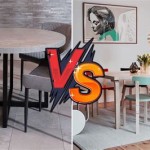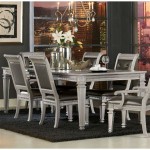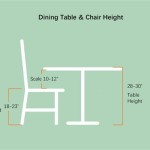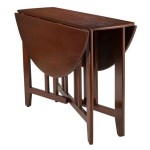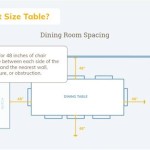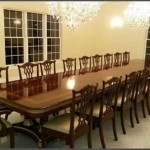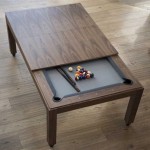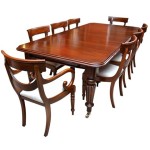How to Set Up A Dining Table
Setting a dining table correctly elevates any meal, whether it's a casual breakfast, a formal dinner party, or a holiday celebration. A well-set table not only enhances the aesthetic appeal of the dining experience but also demonstrates respect for guests and attention to detail. Understanding the principles of table setting allows for creating a welcoming and functional environment for dining, regardless of the occasion's formality. The specific components and arrangement will vary depending on the menu and desired ambiance, but the underlying guidelines remain consistent.
This article provides a comprehensive guide on how to set up a dining table, covering essential elements, different levels of formality, and key considerations for creating a visually appealing and practical setting. The information presented aims to empower individuals to confidently set a table appropriately for any occasion, enhancing the overall dining experience for themselves and their guests.
Understanding the Basic Table Setting Elements
The foundation of any table setting lies in understanding the placement and purpose of each element. From the charger plate to the glassware, each item contributes to the overall functionality and aesthetic of the table. The primary elements include the charger plate (optional), dinner plate, salad plate, bread plate, soup bowl (if applicable), silverware, glassware, napkins, and place cards (optional).
The charger plate, also known as a service plate, is a large decorative plate used as a base for other dishes during formal meals. It remains on the table throughout the appetizer and salad courses and is removed before the entree is served. The dinner plate is the central plate on which the main course is served and is placed directly on top of the charger plate or, in more informal settings, directly on the table. The salad plate is smaller than the dinner plate and is used for salads. It is typically placed to the left of the dinner plate or on top of the dinner plate if the salad is served before the main course.
The bread plate is a small plate placed to the upper left of the dinner plate, above the forks. It is used for bread and butter. A butter knife is typically placed horizontally across the bread plate or diagonally on the top right corner. The soup bowl is used for serving soup and is placed on top of the dinner plate or on a separate soup plate. It is removed after the soup course is finished.
Silverware placement follows a specific order based on usage. Forks are placed to the left of the dinner plate, with the salad fork on the outside and the dinner fork on the inside. The knife is placed to the right of the dinner plate, with the blade facing the plate. Spoons are placed to the right of the knife. The soup spoon is placed to the right of the knife if soup is being served. Dessert silverware is typically placed above the dinner plate or brought to the table with the dessert course.
Glassware is placed to the upper right of the dinner plate. The water glass is placed closest to the plate, followed by the wine glass(es). The specific types of wine glasses will depend on the wines being served. A red wine glass is typically larger and rounder than a white wine glass. A champagne flute is tall and narrow to preserve the bubbles.
Napkins can be placed in various locations, depending on the formality of the setting. They can be placed to the left of the forks, under the forks, on top of the dinner plate, or in a napkin ring. The placement of the napkin should be consistent and visually appealing. Place cards are used in formal settings to indicate where each guest should be seated. They are typically placed above the dinner plate or above the glassware.
Formal vs. Informal Table Settings
The level of formality of a table setting is determined by the occasion and the specific elements used. A formal table setting is characterized by the use of charger plates, multiple courses, specialized glassware, and precisely placed silverware. An informal table setting is simpler, with fewer elements and a more relaxed arrangement.
A formal table setting typically includes a charger plate, dinner plate, salad plate, soup bowl (if applicable), bread plate, multiple forks (salad fork, dinner fork), a knife, a soup spoon (if applicable), a teaspoon, dessert silverware, a water glass, multiple wine glasses (red wine glass, white wine glass, champagne flute), a napkin, and a place card. The silverware is meticulously placed in the order of usage, with the outermost utensils used for the first course and the innermost utensils used for the last course. The glassware is arranged in a specific order, with the water glass closest to the plate and the wine glasses arranged according to the wines being served. The napkin is often folded decoratively and placed on the dinner plate or to the left of the forks. Place cards are used to indicate the seating arrangement.
An informal table setting is simpler and more relaxed. It typically includes a dinner plate, a fork, a knife, a spoon, a water glass, and a napkin. The silverware is placed in the order of usage, but there are fewer utensils. The glassware is limited to a water glass and perhaps one wine glass. The napkin is often placed to the left of the fork or on the dinner plate. Place cards are generally not used in informal settings.
The choice between a formal and informal table setting depends on the occasion and the desired ambiance. A formal setting is appropriate for special occasions, such as holidays, weddings, or formal dinner parties. An informal setting is suitable for everyday meals, casual gatherings, or informal parties. The goal is to create a setting that is both functional and aesthetically pleasing, enhancing the overall dining experience.
Key Considerations for Creating an Appealing Table Setting
Beyond the basic guidelines, several key considerations contribute to creating a truly appealing and memorable table setting. These considerations include color schemes, centerpieces, linens, and overall table balance. Paying attention to these details elevates the dining experience and creates a welcoming and visually engaging atmosphere.
Color schemes play a significant role in setting the mood and tone of the table. A cohesive color palette enhances the visual appeal and creates a sense of harmony. Consider using complementary colors or variations of a single color to create a balanced and aesthetically pleasing look. Neutral colors, such as white, cream, and gray, provide a versatile base that can be accented with pops of color through linens, flowers, or other decorative elements. Warm colors, such as red, orange, and yellow, create a sense of energy and excitement, while cool colors, such as blue, green, and purple, promote calmness and tranquility. The choice of color scheme should reflect the occasion and the desired ambiance.
Centerpieces serve as the focal point of the table and add visual interest. A well-chosen centerpiece can enhance the overall aesthetic and create a sense of occasion. The size and style of the centerpiece should be appropriate for the size of the table and the formality of the setting. Avoid centerpieces that are too tall or obstruct the view of guests across the table. Floral arrangements are a classic choice for centerpieces, but other options include candles, fruit bowls, decorative objects, or seasonal displays. The centerpiece should complement the color scheme and overall theme of the table setting.
Linens, including tablecloths, placemats, and napkins, add texture and sophistication to the table. The choice of linens should complement the style of the dinnerware and silverware. Tablecloths provide a formal and elegant look, while placemats offer a more casual and contemporary feel. Napkins can be made of cloth or paper, depending on the formality of the setting. Cloth napkins are more elegant and sustainable, while paper napkins are more convenient for casual occasions. The color and texture of the linens should complement the color scheme and overall theme of the table setting. Ironing linens before use is essential for a polished and refined look.
Achieving overall table balance involves arranging the elements in a way that is visually pleasing and harmonious. Consider the placement of each item and ensure that the table is not overcrowded or unbalanced. The centerpiece should be centered on the table, and the silverware should be evenly spaced. The glassware should be arranged in a consistent and logical order. The napkins should be neatly folded and placed in a designated spot. Attention to detail is crucial for creating a table setting that is both functional and aesthetically pleasing. A well-balanced table setting enhances the dining experience and creates a welcoming and inviting atmosphere for guests.

Proper Table Setting 101 Everything You Need To Know Emily Post

How To Set The Table For Any Occasion Grain Frame
How To Properly Set A Dining Table For Every Occasion

The Ultimate Table Setting Guide How To Set A Proper Showit Blog

How To Properly Set The Dinner Table A Cleaner World

Stunning Yet Basic Dining Table Setting For Your Next Dinner Party

How To Set A Beautiful Formal Table It S Easy Mantel And

Table Setup Setting The Food And Beverage Fine Dining

Restaurant Table Setting Ideas How To Set Up Upmenu

How To Set A Dining Table Dengarden

